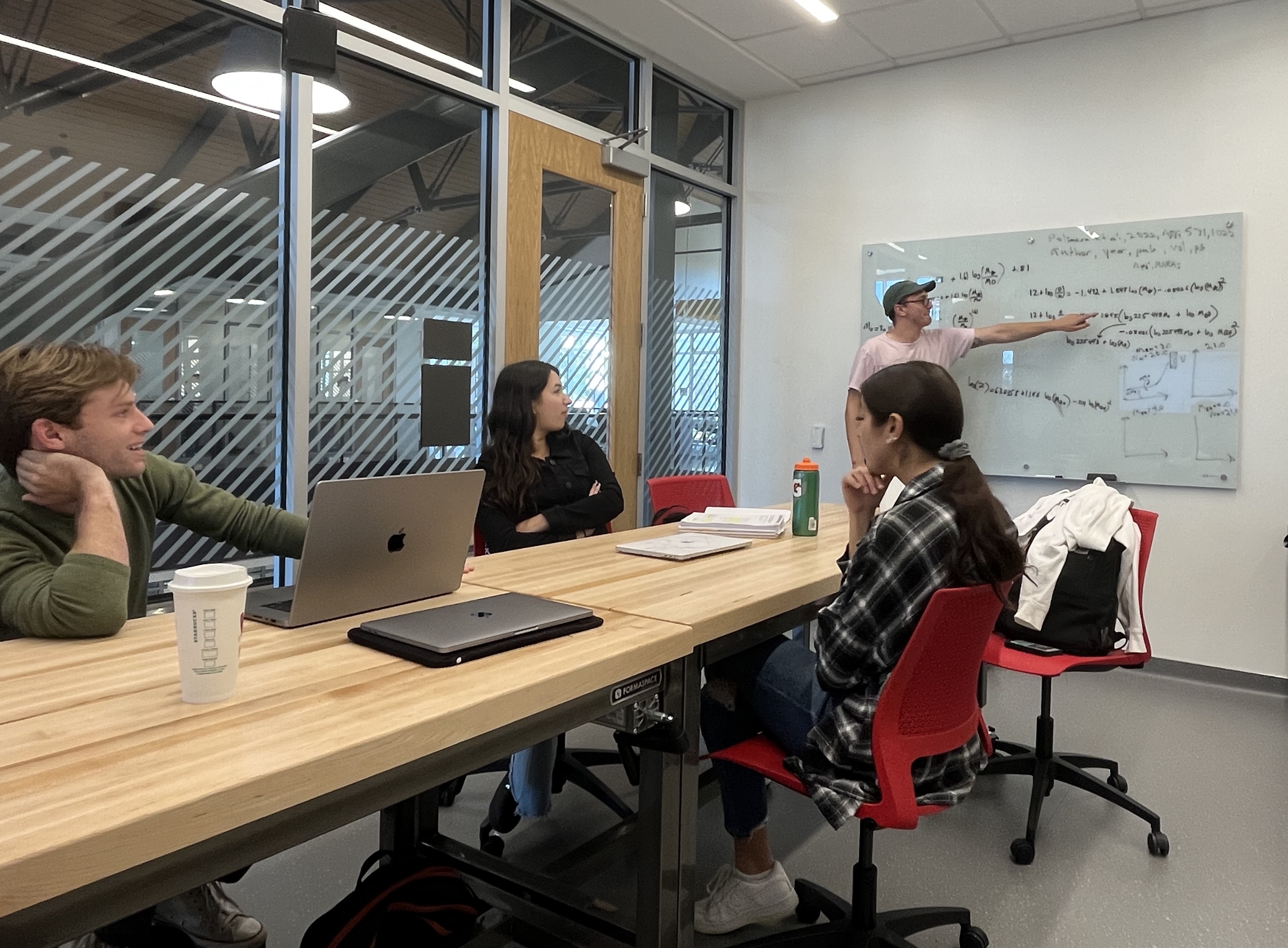Chris Richardson - Elon University
Our Research Team
What are we about?
 Our research group meets on a bi-weekly basis to discuss the progress on our individual projects, receive feedback from others, and outline the next steps that need to be taken. We often welcome visiting researchers to present their latest work and give guidance on professional development in the field. Everyone in our group work on distinct projects related to galaxies and/or accreting black holes. This allows each member of our group to have a unique project of their own, while still receiving constructive comments from others that are familiar with the topic. Elon students can start working on a project as early as their first year of classes. Mentor-menteee meetings (M3) pair up more advanced students with those early stages of reserach to discuss anything over coffee or lunch. Sudents in our group are involved in the entire scientific process, which involves project development, data collection, data analysis, presenting results, and publishing in top-tier, peer reviewed journals.
Our research group meets on a bi-weekly basis to discuss the progress on our individual projects, receive feedback from others, and outline the next steps that need to be taken. We often welcome visiting researchers to present their latest work and give guidance on professional development in the field. Everyone in our group work on distinct projects related to galaxies and/or accreting black holes. This allows each member of our group to have a unique project of their own, while still receiving constructive comments from others that are familiar with the topic. Elon students can start working on a project as early as their first year of classes. Mentor-menteee meetings (M3) pair up more advanced students with those early stages of reserach to discuss anything over coffee or lunch. Sudents in our group are involved in the entire scientific process, which involves project development, data collection, data analysis, presenting results, and publishing in top-tier, peer reviewed journals.
 Scientific research allows students to develop skills useful for advanced study or entering the job market. In our group, these skills include Python coding, handling "big data", command line navigation, high performance computing, SQL queries, image processing, and much more. Our network of collaborators enables students to interact with professional astronomers as peers. Our involvement with large scale surveys, such as PHANGS, provide a wealth of data for students to dig into reducing, interpreting, and modeling. Most of our students are astronomy majors or astrophysics majors, the latter of which gives them a solid foundation to pursue graduate school.
Scientific research allows students to develop skills useful for advanced study or entering the job market. In our group, these skills include Python coding, handling "big data", command line navigation, high performance computing, SQL queries, image processing, and much more. Our network of collaborators enables students to interact with professional astronomers as peers. Our involvement with large scale surveys, such as PHANGS, provide a wealth of data for students to dig into reducing, interpreting, and modeling. Most of our students are astronomy majors or astrophysics majors, the latter of which gives them a solid foundation to pursue graduate school.
 Our researchers take advantage of the numerous opportunties that Elon University provides to conduct and present research. The Summer Undergraduate Research Experience (SURE) enables students undertake a detailed project for 8 weeks of paid work that culminates in a poster presentation. Every year, Elon also dedicates an entire day on campus to the Summer Undergraduate Research Forum (SURF) and provides substantial support for students to attend the National Conference for Undergraduate Research (NCUR). Additionally, the Undergraduate Research Program (UGR) supplies financial assistance for travel to larger disciplinary conferencers such as the North Carolina Space Symposium and the annual American Astronomical Society (AAS) Meeting.
Our researchers take advantage of the numerous opportunties that Elon University provides to conduct and present research. The Summer Undergraduate Research Experience (SURE) enables students undertake a detailed project for 8 weeks of paid work that culminates in a poster presentation. Every year, Elon also dedicates an entire day on campus to the Summer Undergraduate Research Forum (SURF) and provides substantial support for students to attend the National Conference for Undergraduate Research (NCUR). Additionally, the Undergraduate Research Program (UGR) supplies financial assistance for travel to larger disciplinary conferencers such as the North Carolina Space Symposium and the annual American Astronomical Society (AAS) Meeting.